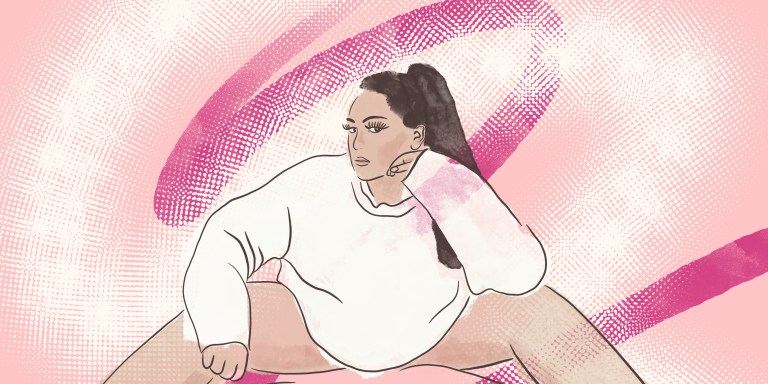Hidradenitis Suppurativa is a skin disorder in which pimple-like bumps appear on the skin. These bumps tend to develop most commonly on areas of the body where skin touches other skin, such as under the arms, or on the groin. The bumps can be characterized as breakouts, cysts, folliculitis and boils. According to the American Academy of Dermatology, these breakouts can grow deeply into the skin, becoming extremely painful and sometimes rupture, and leaving different degrees of scarring.
If you have just been diagnosed with Hidradenitis Suppurativa, the first step is to figure out what stage you have. There are 3 different stages of HS. Determining this will help you decide what treatment plan will be best for you.

Stages Of Hidradenitis Suppurativa
Stage 1: At stage 1, you will experience itching, discomfort, or some welts or bumps. Your breakouts are discernibly different than typical acne, specifically in that they are more severe, and last longer. Typically, stage 1 HS does not significantly interfere with your everyday life.
Stage 2: At stage 2, your abscesses are recurrent, and are gaining tract formation and scarring. There may be multiple or many separated lesions. They are likely not so uncomfortable that you cannot function, but they are significantly more painful than they were at stage 1.
Stage 3: At the third and final stage of HS, there are multiple, interconnected tracts of abscesses that can be seen across entire sections of your body, including inner thighs, under arms, and other areas most commonly that would grow hair, and touch other parts of your skin. At stage 3, HS can severely impact your quality of life, mobility or even ability to function.
Remember that not all HS progresses from stage 1 to stage 3 sequentially. You may have stage 2-3 at the onset, or you may have stage 1 and maintain stage 1 for the rest of your life. Though there is currently no cure for HS, you can manage your symptoms and breakouts with multiple different treatments.
According to the Mayo Clinic, your doctor may decide to treat your HS with either medication, surgery, or other options.
Medications
- You might be prescribed an antibiotic cream to fight infections, such as lindamycin and gentamicin.
- You may also be prescribed systemic drugs, such as antibiotics. This typically is prescribed at a later stage of HS.
- You may also receive injections of infliximab or anakinra.
- Lastly, your doctor might prescribe pain medication.
Surgery
- You may require surgery to “unroof” your skin. This removes tissue to expose the “tunnels” of HS.
- You may undergo “punch debridement,” or limited unroofing, which can remove a single inflamed nodule.
- Tissue-sparing excision with electrosurgery can clear damaged tissue with an electric peel system.
- Laster therapy may help lesions reduce.
- Surgical removal of affected areas of skin may also be required, at which point a skin graft to cover the area may be utilized as well.
- Lastly, you may receive incision and drainage for short-term relief, though this is often not considered an effective treatment plan anymore.

What are natural treatments for HS?
If you have been diagnosed with Hidradenitis Suppurativa, it is important that you consult with a doctor to ensure that you have a treatment plan that is right for you. However, you can supplement that with other home remedies, such the use of warm compresses, tea tree oil, honey, rubbing alcohol, zinc, bleach baths or anti-inflammatory foods.
There are many different treatment options available, but the correct combination to help your skin will differ on a case-by-case basis. As always, consult with a health professional to find the right plan for you.






